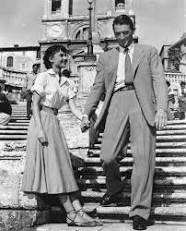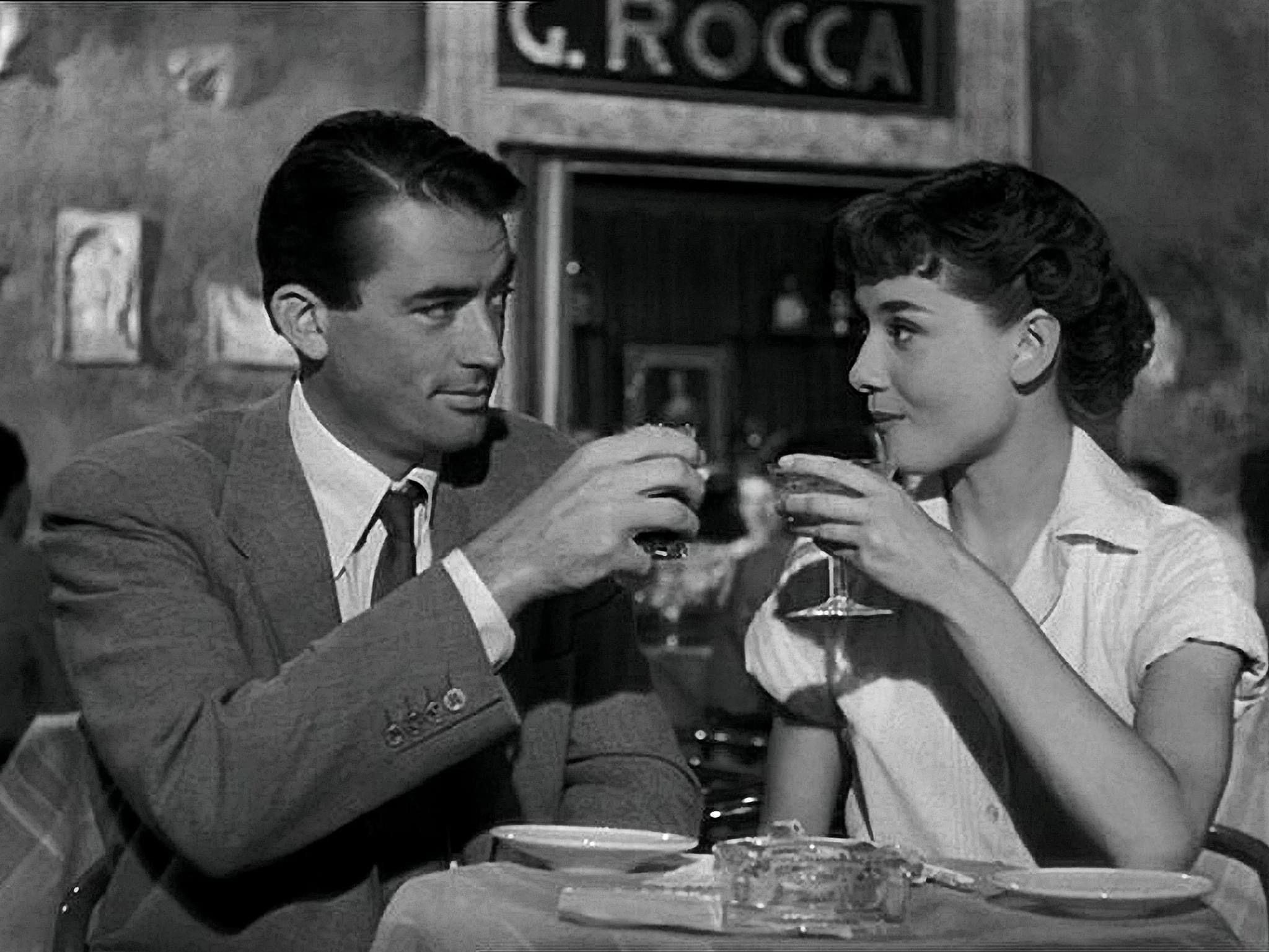By the time he got the script for “Roman Holiday” (1953), Gregory Peck was hungry to do a comedy (he had not been in a comedy on film) and jumped at this opportunity. He later said that, at the time, he felt like every romantic comedy script he had the chance to read “had the fingerprints of Cary Grant on it.”
Funny he should feel that way, as Peck’s role in the film was originally written with Grant in mind. Grant, however, turned the role down as he believed he was too old to play Audrey Hepburn’s love interest. He also turned down the lead in Billy Wilder’s “Love in the Afternoon” in 1957 for the same reason. He did, however, play her on-screen love ten years later in Charade (1963).
Even though Peck was feeling the way he did, he was initially reluctant to take on a part that was clearly secondary to the young female lead, until he realized that his image could do with some lightening up.
Paramount originally wanted to shoot this movie in Hollywood. Director William Wyler refused, insisting it must be shot on location. They finally agreed, but with a much lower budget. This meant the movie would be in black and white, not the expected Technicolor, and he would need to cast an unknown actress as the Princess, Hepburn.
After filming, Peck informed the producers that, as Hepburn was certainly going to win an Oscar (for this, her first major role), they had better put her name above the title. They did and she did.
Who wouldn’t, however, next to Audrey Hepburn? Twenty-three at the time of filming, and making her Hollywood debut after a handful of minor parts across the pond, the Dutch-British ingenue was the industry’s own coronation candidate: a star who didn’t look, sound or even move quite like her contemporaries, suited to the part of idealised continental royalty down to her distinctive hybrid accent and ripe, rounded diction.
“And introducing Audrey Hepburn,” state the film’s opening credits, effectively announcing Roman Holiday’s mission statement, its reason for being. The film may be a sweet, attractive diversion on its own terms, but it’s galvanised by this sense of purpose, this determination to mint an icon right before your eyes. Even Vivien Leigh had a couple of leading credits before Gone With the Wind made her anew; Julia Roberts was an Oscar nominee before Pretty Woman sent her supernova. Rare are the films that this effectively construct a movie star from virtual scratch, setting an image and persona to last an entire career: Roman Holiday is one.


It wasn’t quite intended to be that way. Ready-made stars like Elizabeth Taylor and Jean Simmons were pencilled in as Princess Ann before scheduling clashes sent the director, William Wyler, in search of fresher faces. It’s easy enough to see Taylor meeting the part’s winsome brief, but rather harder to imagine it being a career-defining role for her. Familiarly conceived as the film may be in many departments, Roman Holiday thrives on the thrill of the new – both within its narrative, as its runaway princess experiences the liberties of civilian life for the first time, and in the gaze of the camera, as it discovers and explores Hepburn’s face, finding its best angles amid infinite good ones. You can see why Gregory Peck – himself a younger, fresher hire than initially planned, having inherited the part after Cary Grant turned it down – agreed to drop his contractual solo star billing, in order to elevate hers. He’s perfectly suave as Joe, the American journo who gives Ann a brief taste of the common good life, but any true movie star knows when they’ve lost the spotlight.


